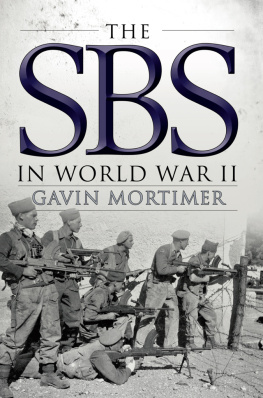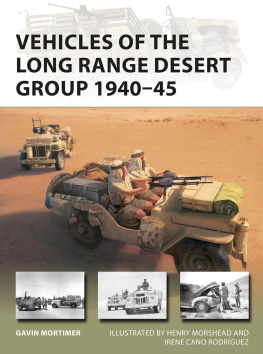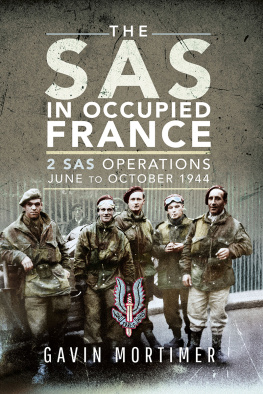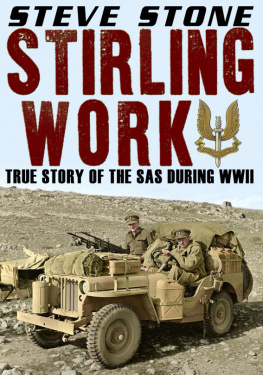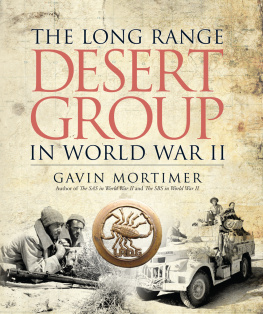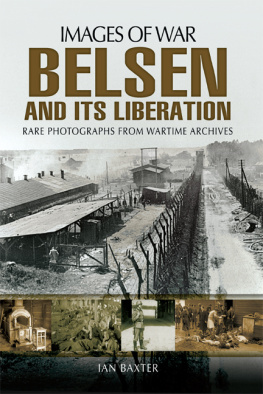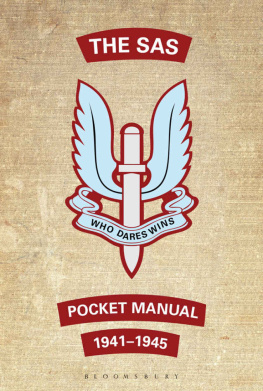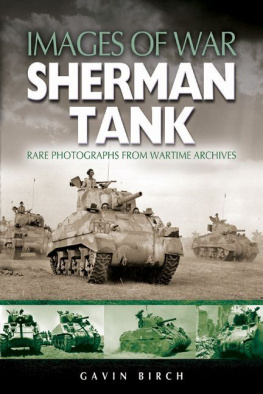
This electronic edition published in 2015 by Bloomsbury Publishing Plc
First published in Great Britain in 2011 by Osprey Publishing,
PO Box 883, Oxford, OX1 9PL, UK
PO Box 3985, New York, NY 10185-3985, USA
E-mail:
Bloomsbury is a trademark of Bloomsbury Publishing Plc
OSPREY PUBLISHING, PART OF BLOOMSBURY PUBLISHING PLC
2011 Gavin Mortimer
First published by Osprey Publishing in 2011 as The SAS in World War II: An Illustrated History. This abridged edition was first published in Great Britain by Osprey Publishing in 2015.
All rights reserved
You may not copy, distribute, transmit, reproduce or otherwise make available this publication (or any part of it) in any form, or by any means (including without limitation electronic, digital, optical, mechanical, photocopying, printing, recording or otherwise), without the prior written permission of the publisher. Any person who does any unauthorised act in relation to this publication may be liable to criminal prosecution and civil claims for damages.
A CIP catalogue record for this book is available from the British Library
Gavin Mortimer has asserted his right under the Copyright, Designs and Patents Act, 1988, to be identified as the Author of this Work.
ISBN: 978-1-4728-0875-2
e-pub ISBN: 978-1-4728-0877-6
PDF ISBN: 978-1-4728-0876-9
Front cover and title page: In addition to the single Vickers next to the drivers seat and the twin Vickers in the rear, SAS jeeps also carried a Browning machine gun such as the one in this photograph. (Courtesy of the SAS Regimental Archive)
Osprey Publishing is supporting the Woodland Trust, the UKs leading woodland conservation charity, by funding the dedication of trees.
www.ospreypublishing.com
Imperial War Museum Collections
Many of the photos in this book come from the Imperial War Museums huge collections which cover all aspects of conflict involving Britain and the Commonwealth since the start of the twentieth century. These rich resources are available online to search, browse and buy at www.iwmcollections.org.uk. In addition to Collections Online, you can visit the Visitor Rooms where you can explore over 8 million photographs, thousands of hours of moving images, the largest sound archive of its kind in the world, thousands of diaries and letters written by people in wartime, and a huge reference library.
Imperial War Museum www.iwm.org.uk
DEDICATION
Most of the interviews with SAS veterans were conducted more than a decade ago and unfortunately most have since passed on. But at the time of writing Albert Youngman and Mike Sadler are still strong so I dedicate this book to them, two courageous, compassionate but above all modest men.
ACKNOWLEDGEMENTS
Thanks first to the ever helpful staff of the Imperial War Museum reading room and the National Archives in Kew, who assisted me in my research. A particular debt of gratitude to the SAS Regimental Association, who not only granted permission to reproduce some of the photographs in their collection but also provided answers to any wartime questions I had.
Thank you to John Kane in Northern Ireland and John Robertson in Scotland, the latter being the creator of www.specialforcesroh.com, an excellent website that is well worth a visit. John allowed me to reproduce some photos from his site.
Several publishers were good enough to grant me permission to quote from their works and so I thank Sutton (Paddy Mayne by Hamish Ross); Greenhill (SAS and the Maquis by Ian Wellsted); Cassell (Winged Dagger by Roy Farran); Pen and Sword (The Drums of Memory by Stephen Hastings) and Strong Oak (Parachute Padre by Fraser McLuskey).
Kate Moore and Emily Holmes at Osprey provided excellent support in the writing and editing of the book, and were tolerant of any missed deadline.
Thank you to Peta-Jane, daughter of Des Peter Middleton, Yvonne Greig, daughter of Jeff Du Vivier and Nicky Mellonie, daughter of Bob Sharpe. They went to great lengths to provide me with an array of wonderful photos, documents and other memorabilia and I am so very grateful. Thank you also to Mrs Joan Sharpe, widow of Bob, who unearthed some photos of her daring husband, and to Joe and Chris Bonington for providing valuable information on Charles.
INTRODUCTION
In June 1941 a young Guards officer lay recovering from a parachute accident in Cairos Scottish General Hospital. Normally a spell in bed would have been just the ticket for the 25-year-old lieutenant who had been nicknamed the Giant Sloth by friends on account of his disdain for unnecessary physical exertion; but on this occasion he was desperate to throw off the bedclothes and get to work. Unfortunately for David Stirling he was going nowhere for a while, not until he had recovered from severe spinal shock and heavy concussion, a consequence of hitting the ground at a frightening speed after a section of his parachute ripped on the tailplane as he exited an aircraft at 1,000ft.
It took a week for the feeling to return to Stirlings toes and in that time he received a steady stream of visitors to his bedside, among whom were Evelyn Waugh and Jock Lewes. Both were fellow officers in Layforce, a composite commando unit commanded by Colonel Robert Laycock that had sailed to the Middle East in February 1941 with the intention of launching a string of lightning assaults on Italian positions on the North African coast and Mediterranean islands. Only it hadnt quite worked out that way, and instead of inflicting heavy casualties on the enemy, Layforce had lost many good men on ill-conceived and poorly planned missions. It was Waugh, recently returned from a botched Layforce operation to Crete, who informed Stirling that Layforce had been disbanded and its surviving members were to be returned to their original units.
The news was disappointing for Stirling, but hardly surprising, it was confirmation of something he had already discussed with Lewes: namely, that the thinking behind Layforce wasnt flawed, just its deployment. The enemy was indeed vulnerable to attack along the lines of its coastal communications and various aerodromes and supply dumps, but not with a seaborne force of 200 men as Layforce had attempted. A commando raid would work best if executed by small units of men attacking not just one target but a series of objectives having first been inserted by parachute.
That was why Stirling along with Lewes and four other men had been jumping out of a plane in the first place, to master a military art that was still in its infancy. His injury was but a minor hiccup and had done nothing to deflect Stirling from his belief he was on to something. Now the news of Layforces demise made him more determined than ever to develop his idea. Lying in his hospital bed in the sweltering heat of the North African summer, Stirling drafted a memo entitled Case for the retention of a limited number of special service troops, for employment as parachutists. In a summarisation of the memo shortly after the war Stirling wrote:
I argued the advantages of establishing a unit based on the principle of the fullest exploitation of surprise and of making the minimum demands on manpower and equipment. I argued that the application of this principle would mean in effect the employment of a sub-unit of five men to cover a target previously requiring four troops of a Commando, i.e. about 200 men. I sought to prove that, if an aerodrome or transport park was the objective of an operation, then
Drafting the memo was the easy part, delivering it into the hands of General Claude Auchinleck, Commander-in-Chief, Middle East Forces, was a different matter altogether. The Auk, as Auchinleck was known, liked to tell his troops Always be bold, so thats exactly what Stirling did the moment he was well enough to leave hospital.
Next page

